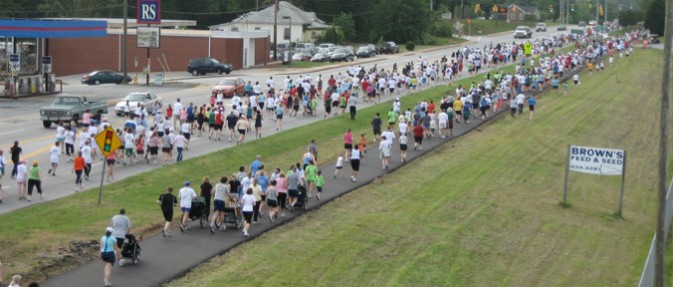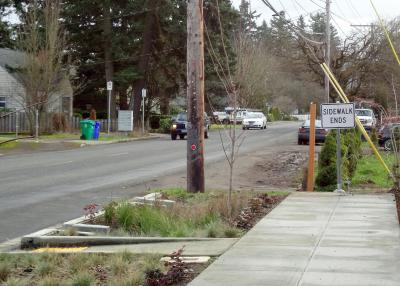Four Lessons from the 50th International Making Cities Livable Conference
Last week, I had the privilege of attending the 50th International Making Cities Livable Conference here in Portland, Oregon. This year’s theme was, "reshaping suburbia into healthy communities", a rather hot topic these days and one which has finally become a focus for more places than I had previously expected. Many cities have up until recently famously emphasized the revitalization of their downtowns, a point of contention for those concerned with the exurban regions. Where once the urban core was the dangerous home of (so-called) ghettos and the suburbs were the epitome of the (again, so-called) American Dream, the reverse is quickly becoming reality. It’s a startling trend - housing prices are rising in downtown regions whereas suburbs are in the decline, increasingly occupied by the disadvantaged populations previously living in the now-popular urban apartment blocks.
This conference, started in 1985 by Dr. Suzanne H. Crowhurst Lennard and Dr. Henry L. Lennard, aims to bring together a host of multidisciplinary professionals worldwide in order to exchange ideas surrounding livability in the urban realm (and was one of the first to do so!). Fifty conferences later it is still a far-reaching influential event bringing together mayors, policy makers, planners, architects, social scientists, and even lawyers. Though my mind is still reeling from five days packed with inspirational speakers, informative presentations, and the buzz of a few hundred professionals from around the world, the following are my top four highlights from the 50th International Making Cities Livable Conference.
1.) The Suburbs Can Change
I’m always skeptical of the suburbs (suburban skepticism?) in regards to them ever truly turning a new leaf towards walkability in a livable sense. Apparently, not only suburbs, but smaller sized towns and cities around the globe are putting an emphasis on revitalizing (or creating, for that matter) their downtown areas, in many cases emphasizing their historic heritage and creating local pride for their spot on the map. Where I live in Portland, Oregon, I’ll admit to having never ventured out to the suburban edge city of Hillsboro. It is accessible by train, but for a city-dweller like myself has never been an interesting destination. I was surprised then when Collin Cooper, the Assistant Planning Director of Hillsboro, illustrated what is possible when public space and a human scale is applied to an otherwise suburban city center. Another major speaker, Ellen Dunham-Jones (of New Urbanism fame), also presented a suite of examples of shopping mall retrofits in suburban neighborhoods, many of which are continuing to increase in density today. This and many other examples from small towns blew away my expectations of increasing density and creating urban cores where none existed before.
2.) Look at the Alternatives (transportation, that is)
One example of development in a small town did a great job of bouncing back after a natural disaster, but also integrated some unexpected elements into the space. After a major flood, the city of Yorkton, Canada, decided to turn what was once a street severely affected by the flooding into a mixed-use path with a retention basin and skatepark. That’s right - a skatepark! Gord Shaw explained that they took this opportunity to provide a safe, well-lit, and accessible place for youth to interact and get exercise. Rather than pushing skateboarders out of public spaces without a place for them to go to, they decided to take advantage of the new swath of land and encourage the healthy activity in a populated places. While some issues of cleanliness and drug use did arise early on, the community took ownership of this place and it is now a maintained destination for young families and the elderly community located nearby. I thought this was an excellent example of alternative transportation taken to its height - not only emphasizing the usual modes of bicycles and public transportation - but an all-inclusive alternative transportation policy.
5.) Even Portland has its Problems
The conference was in Portland, as is the main office for the IMCL Council, because it is known as exemplifying the livable cities concept in its walkability, public space, and urban life. The conference of course had many speakers from Portland and nearby, including the recently elected Mayor Hales, Metro President Tom Hughes, and the always enthusiastic Michael Mehaffy. But more important than what Hillsboro is doing or the tours around the parks in the Pearl District is what Susan Anderson, Director of Portland’s Bureau of Planning and Sustainability, had to say about our “dirty little secret”. Much like suburbs outside the reaches of the city, accessible only by car and filled with cul-de-sacs (and so on), there are regions within cities which also contain all the ills associated with what this conference was all about. Portland has a very small, accessible downtown region and even the areas across the river have their own economic corridors and concentrated centers - to a point. That point for us is east of 82nd Street. In a city famous for its walkability, as Susan stated in her presentation, this is literally the point in Portland where the sidewalk ends. And that’s not okay. Even as a city famous for exemplifying livability concepts, there is always more to do to reshape the city towards a more inclusive livability standard.
4.) The Focus is our Future
Looking toward the future (as I am apt to do), there is another thread of livability which should be emphasized in the suburbs (and elsewhere) as perhaps the biggest issue we need to resolve - the health of our children. Dr. Crowhurst Lennard has put considerable time into this cause (via books and her website) and focused on children during her talks at the conference. Like the notably livable Scandinavian countries, we need to realize that an emphasis on children is an emphasis on everyone. Regardless of whether or not you have children yourself, we can all benefit from the impact that designing for children brings (slower streets for example). Another key speaker, Dr. Richard J. Jackson (author of Designing Healthy Communities and famous for the PBS series of the same name), also focuses heavily on children’s relationship to the built environment and the psychological issues that come with issues of suburban development and isolation. As a doctor, he links this to the rising obesity rates in children as well as the overprescription of antidepressants. The link between the built environment and health is stronger than once thought, and if we are to create a better future, we need to start by building better cities.
Overall, the conference provided a bit of everything - some inspirational motivation, some harsh realities, and some real examples of what can be done when cities (and suburbs) really put their priorities on livability for all. As this was admittedly my first conference, I can safely say that I’m hooked. Give me interdisciplinary collaboration and communication anytime! I think I speak for everyone there when I say the experience was invaluable for education and connectivity, and I look forward to seeing the progress in the suburbs and continuing the conversation at the next one.





